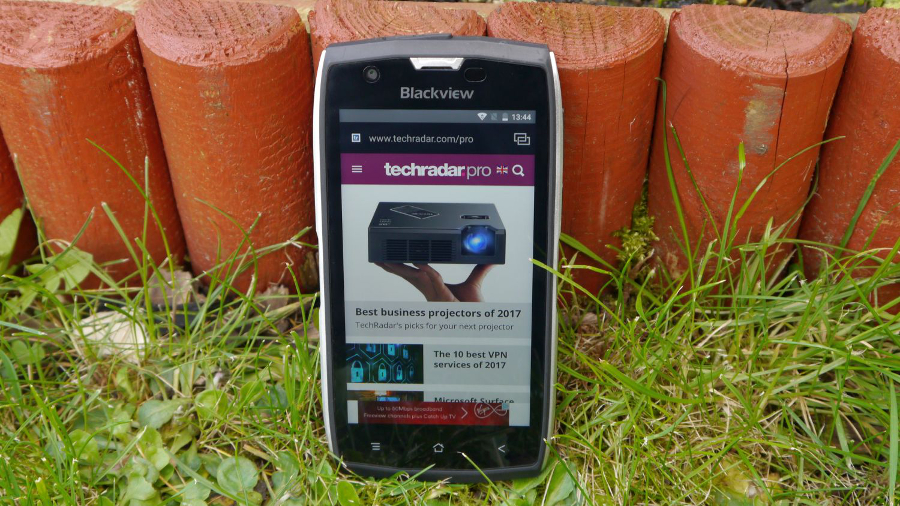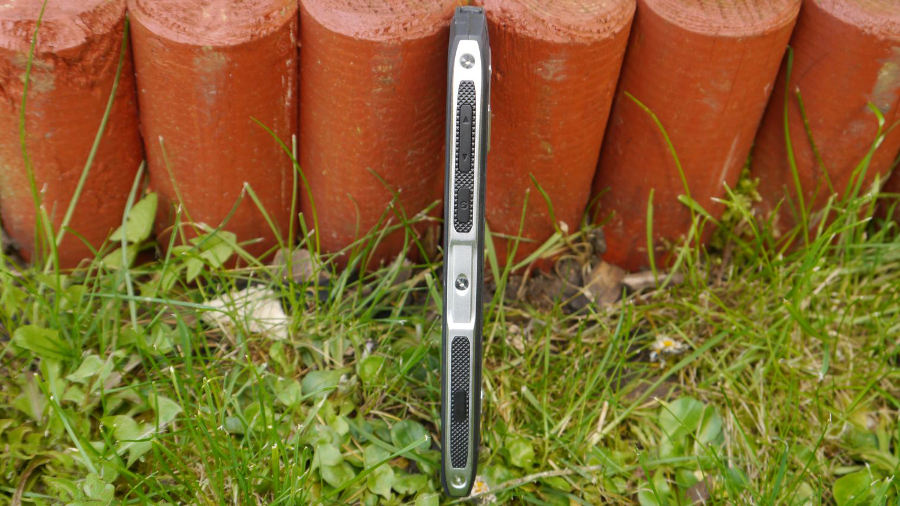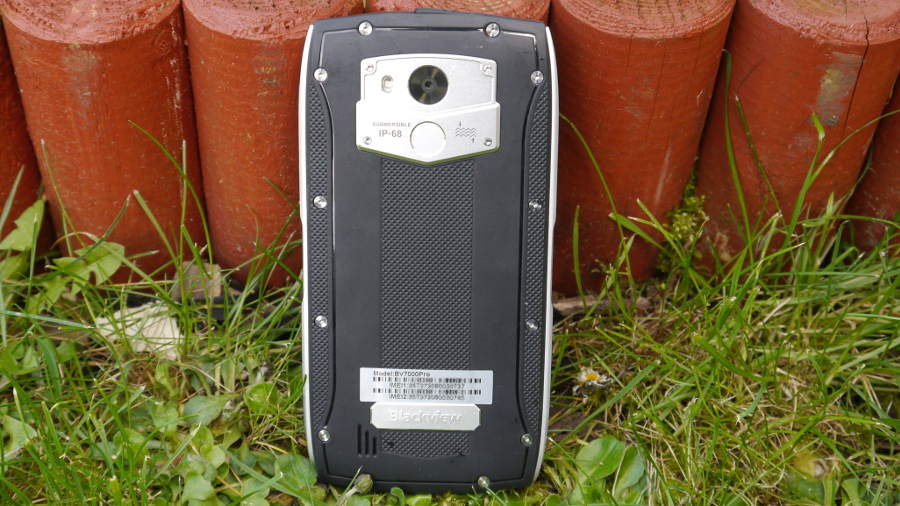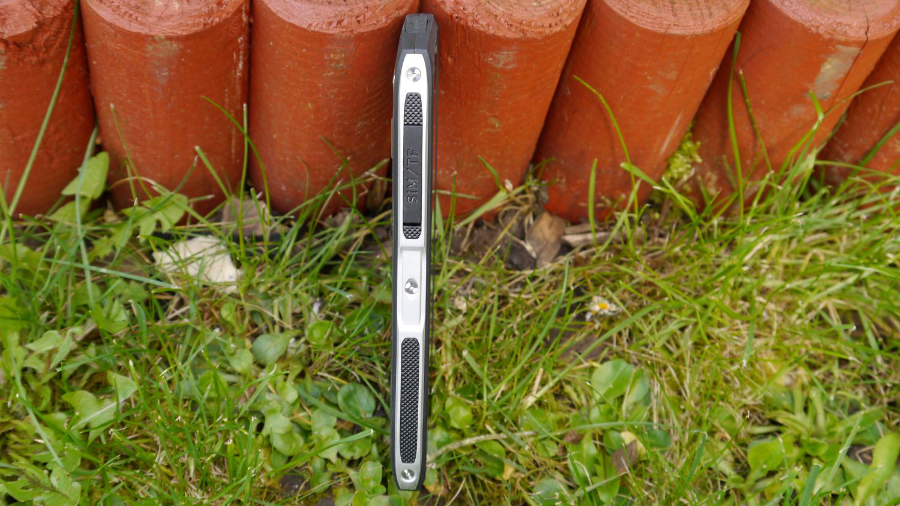Early Verdict
The Blackview BV7000 Pro is a balanced product aimed at a wider audience beyond the traditional builders and ruggedised verticals.
Pros
- +
Attractive design
- +
Great value for money
Cons
- -
Still no NFC or 802.11ac
- -
Performance is worse than the BV6000
Why you can trust TechRadar
Over the past year, the number of rugged smartphones arriving from Chinese manufacturers has risen considerably with no less than 12 players (deep breath: Homtom, AGM, Nomu, Ulefone, Jesy, No.1, Zoji, Three Proofings, Ken Xin Da, Snopow, VChok and Blackview) currently fielding IP68-rated models.
We first came across Blackview last year when the company sent over the BV6000, a handset which sported a brash ‘look-at-me’ design with a bright yellow colour scheme. It was aimed primarily at the traditional builders’ market but impressed us with its great battery life and reasonable price.
The BV7000 Pro is the follow-up to this model, and we’ve been spending some time with it lately. It’s far more elegant than its predecessor with less in the way of aggressive lines and more curves. Gone are the conspicuous yellow plastic strips, replaced by champagne, silver white and grey accents.
- Check the review of the Blackview BV8000 Pro smartphone

At £163 ($200, AU$265) at the time of writing from Blackview’s official store on AliExpress, it is cheaper than the BV6000 at launch. And you do get a lot for your money. Note that these costs are exclusive of any taxes that may be levied by HMRC or the courier companies on behalf of the vendor. Want to buy tech from online Chinese retailers? Read this first.
The phone has the company’s branding on the front with three menu buttons below the display. The two longer sides of the device utilise a textured area for better grip, and play host to microSD/SIM slots, a volume rocker, a power button and a dedicated smart button.

The latter can be configured to perform a pre-programmed action (launch an app, take a screenshot, start an audio recording and so forth). Sadly it’s no replacement for the SOS button on the BV6000.

The back of the device has no fewer than 16 screws, a camera sensor, a fingerprint reader and an LED flash. The audio socket and a USB port are hidden behind rubber flaps on the top and bottom of the smartphone.
Sign up to the TechRadar Pro newsletter to get all the top news, opinion, features and guidance your business needs to succeed!
Both this handset and its predecessor have a CNC full metal frame, but while the bezel on the BV6000 was 6mm at its thinnest, the one on the BV7000 Pro is just 3mm.

It doesn’t have NFC, which is essential if you plan to use Android Pay, and you can’t insert two SIM cards and a microSD card at the same time. But given that the BV7000 Pro comes with 64GB on-board storage, that shouldn’t be an issue. Oh, and there’s an eight-core system-on-a-chip, the Mediatek MTK6750T, backed with 4GB of system memory.
The 6750T SoC is actually a pared down version of the chip on the BV6000, a decision likely to have been motivated by the need to keep the bill of materials within a certain budget.
That translates into worse performance levels, as the clock speed for the GPU (an ARM Mali T860MP2) and the CPU have been kept low – this shouldn’t be problematic, but don’t expect the BV7000 Pro to excel at hardcore mobile gaming.

The screen is a definite improvement, though: a 5-inch Full HD, glove-friendly IPS display with Corning Gorilla Glass 3 allows the size of the bezel on the BV7000 Pro to be significantly thinner than the BV6000, as previously mentioned.
While both devices have approximately the same footprint, the newer Blackview model is far slimmer overall at about 13mm. The knock-on effect is that there’s less space inside the phone which explains why the battery capacity went down from 4200mAh on the BV6000 to 3500mAh (note that you can also use the handset as an emergency battery charger).
The rest of the specification sheet sticks to what we’d expect from a mid-range model: fingerprint sensor, a rear 13-megapixel camera with an F/2.0 aperture, the ability to combine LTE and Wi-Fi to boost download speeds, a front-facing 8-megapixel camera, USB Type-C (finally!), a 5V2A (10W) fast charger, GPS and GLONASS, with the device running Android 6.0. Nougat – which is available for the BV6000 – has yet to be confirmed for the BV7000 Pro.
(Note that Android 7.0 is now available)
Obviously, the other big selling point of the BV7000 Pro is its IP68 rating, which means that it can be immersed in water without any risk at depths of more than 1m (although you need to make sure the ports are properly secured) with complete protection against dust.

Compare the two handsets, though, and it is clear that the BV6000 looks a tougher nut to crack. Note that the PTT (push to talk) and SOS buttons, staple features found in many traditional rugged smartphones, were removed from the BV7000 Pro, and the cards are (too) easily accessible.
In use, the phone proved to be a capable performer and didn’t stutter during our brief encounter. The screen is gorgeous – even in broad daylight – and little additions like ‘smart somatosensory’ (which uses hand-waving to trigger events), the customisable notification light, or Parallel Space, which allows for apps to be cloned and used by multiple users, are great differentiators.
Early verdict
The BV6000 still has its place in Blackview’s portfolio despite the arrival of the BV7000 Pro. A bigger battery combined with a sturdier look, and the two other useful features that disappeared from the new model that we mentioned, make the BV6000 a better choice for users of ruggedised devices.
So rather than a straight replacement, the BV7000 Pro appears to complement rather than supplant the BV6000. The real flagship model will come later this year – the BV8000 Pro is expected to sport the Helio P20 SoC, 6GB of RAM, Android 7.0 Nougat and a 16-megapixel rear camera. The big unknown is how much it will cost. A cheaper version of the BV7000 Pro, known as the BV7000, is also expected to be unveiled soon.
For now though, the BV7000 Pro provides an interesting compromise if you want a mid-range model that doesn’t give away your trade, can take a few pictures in torrential rain, and doesn’t break the bank.
- These are the best business mobile phones of 2017

Désiré has been musing and writing about technology during a career spanning four decades. He dabbled in website builders and web hosting when DHTML and frames were in vogue and started narrating about the impact of technology on society just before the start of the Y2K hysteria at the turn of the last millennium.
What is a hands on review?
Hands on reviews' are a journalist's first impressions of a piece of kit based on spending some time with it. It may be just a few moments, or a few hours. The important thing is we have been able to play with it ourselves and can give you some sense of what it's like to use, even if it's only an embryonic view. For more information, see TechRadar's Reviews Guarantee.
